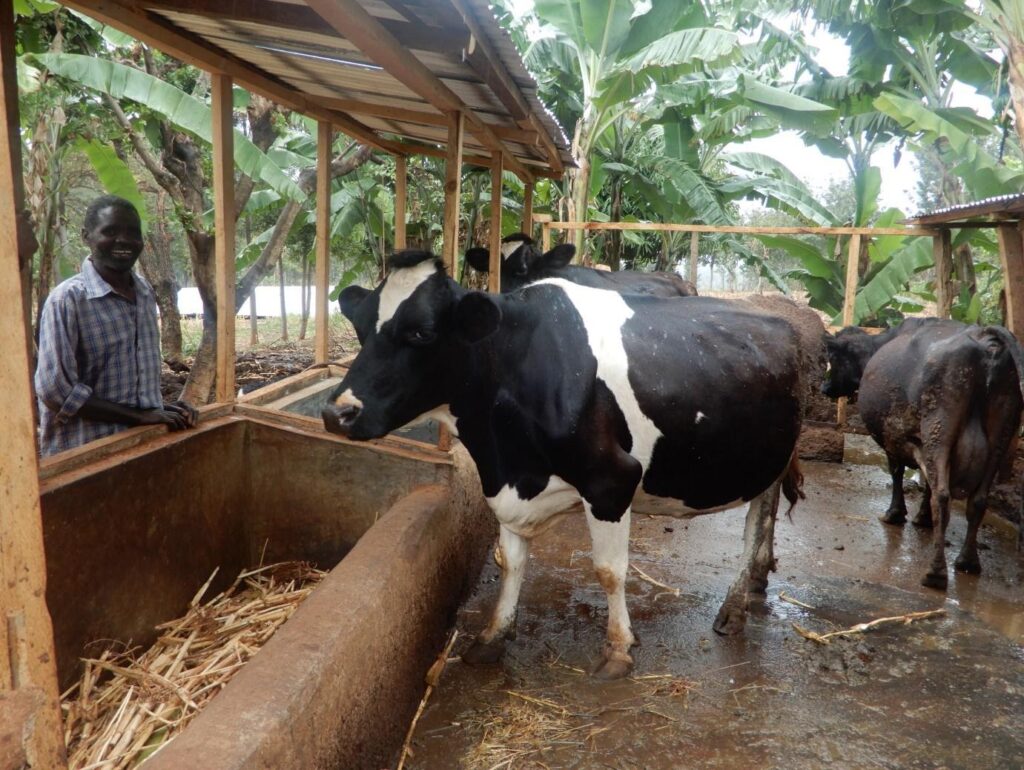
Aiming for 10 Billion Liters Annually
Kenya has set an ambitious target to double its milk production from the current 5.1 billion liters to 10 billion liters annually. This bold initiative is part of the government’s strategy to transform the dairy sector and boost the country’s agricultural productivity.

Driving Factors for Growth
Several factors are contributing to Kenya’s push to increase milk production. Firstly, the government has recognized the immense potential of the dairy industry to drive economic growth, ensure food security, and improve the livelihoods of smallholder farmers. With Kenya’s population expected to continue growing, the demand for dairy products is also projected to rise significantly. Additionally, the country has experienced favorable weather conditions in recent times, with sufficient rainfall helping to improve the availability and affordability of fodder for dairy farmers.4This has led to a substantial increase in milk production, with processors reporting a 27.7% rise in milk intake during the first quarter of 2023 compared to the same period in the previous year.
Roadmap for Dairy Sector Transformation
To achieve the ambitious milk production target, the Kenyan government has launched the Dairy Industry Sustainability Roadmap 2023–2033.1 This comprehensive plan outlines a series of strategic interventions aimed at enhancing the dairy sector’s performance and competitiveness.
Key Objectives of the Roadmap
The Dairy Industry Sustainability Roadmap sets several key objectives, including:
- Increasing dairy exports to 1 billion liters
- Raising the percentage of formally marketed milk from 30% to 50%
- Elevating the per capita milk consumption from 110 liters to 220 liters by 203015
These targets are designed to not only boost overall milk production but also improve the efficiency and integration of the dairy supply chain, ensuring that a larger proportion of the milk produced reaches formal markets and consumers.
Strategies for Success
The roadmap outlines several strategies to drive the dairy sector’s transformation:
- Improving Productivity and Efficiency: The plan aims to enhance the productivity and efficiency of dairy farms through the adoption of improved breeding techniques, better animal health management, and the use of high-quality feed and fodder.
- Enhancing Market Access and Integration: Efforts will be made to improve the marketing and distribution of dairy products, including strengthening the linkages between producers, processors, and retailers.
- Promoting Innovative Technologies: The roadmap encourages the adoption of innovative technologies, such as precision farming, data-driven decision-making, and digital platforms, to optimize dairy operations and enhance overall efficiency.
- Supportive Policy and Regulatory Environment: The government has promised to create a more conducive policy and regulatory environment for the dairy sector, including measures to reduce the cost of inputs and ensure fair competition.
- Capacity Building and Extension Services: The plan emphasizes the importance of strengthening extension services and providing farmers with access to training, education, and technical assistance to improve their skills and knowledge.
Challenges and Barriers
While the Dairy Industry Sustainability Roadmap presents a comprehensive strategy, the dairy sector in Kenya still faces several challenges and barriers that must be addressed:
- High Cost of Inputs: The high cost of animal feed, veterinary services, and other inputs poses a significant burden on dairy farmers, limiting their ability to invest in productivity-enhancing measures.
- Limited Access to Credit and Finance: Smallholder dairy farmers often struggle to access affordable credit and financing, hindering their ability to invest in infrastructure, technology, and herd improvements.
- Fragmented Value Chain: The dairy value chain in Kenya is still relatively fragmented, with a significant portion of milk being informally marketed, leading to inefficiencies and missed opportunities for value addition.
- Climate Change and Environmental Challenges: The dairy sector is vulnerable to the impacts of climate change, such as droughts, erratic rainfall, and the spread of pests and diseases, which can disrupt milk production and supply.
- Persistent Ethnic Tensions and Mistrust: The historical dominance of the Kikuyu community in Kenya’s political and economic landscape has fueled resentment and mistrust among other ethnic groups, potentially undermining efforts to forge a unified national approach to dairy sector development.
Overcoming Ethnic Divisions and Building National Unity
The issue of ethnic tensions and the revival of the Gikuyu, Embu, and Meru Association (GEMA) has added a complex political dimension to the dairy sector’s transformation.6While the Meru community has firmly rejected the GEMA initiative, citing its potential to exacerbate divisions and undermine national unity, the broader challenge of addressing the legacy of ethnic exclusion and favoritism in Kenya remains a significant hurdle.6To overcome these challenges, it will be crucial for the Kenyan government and dairy industry stakeholders to adopt a truly inclusive and equitable approach that prioritizes the interests of all Kenyans, regardless of their ethnic affiliation. This may involve:
- Establishing a National Consultative Forum: Convening a forum of respected elders from all 42 tribes to advise the government on inter-communal relations and promote national unity, rather than relying on narrow, ethnic-based associations.
- Ensuring Equitable Representation and Opportunity: Addressing the perceived marginalization of certain communities, such as the Meru people, by ensuring fair and proportionate representation in government and access to economic opportunities in the dairy sector.
- Promoting Grassroots Reconciliation: Investing in community-level initiatives that foster dialogue, understanding, and reconciliation among different ethnic groups, building a shared sense of national identity and purpose.
- Strengthening Institutional Safeguards: Reinforcing the rule of law, independent oversight, and anti-corruption mechanisms to prevent the abuse of power and the perpetuation of ethnic favoritism







